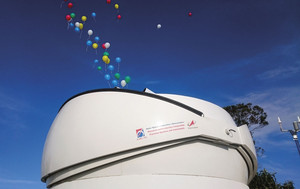
Russian equipment was installed at the Pico dos Dias Observatory in Brasópolis, Minas Gerais State, and will be operated by the LNAGiant Magellan Telescope – GMTO Corporation
On April 5, 2017, a Russian telescope was officially commissioned at the Pico dos Dias Observatory in the city of Brasópolis, Minas Gerais State. The equipment will be used to monitor space debris, such as pieces of rockets, satellites and other remnants in orbit near the Earth. The facility is the result of an agreement signed in 2016 by the National Astrophysics Laboratory (LNA), the Brazilian Space Agency (AEB) and ROSCOSMOS, the Russian Space Agency, which committed to invest an estimated R$10 million. In turn, Brazil is providing the site and logistics for the observatory for the LNA to operate the telescope. The equipment will be capable of detecting debris that measures at least 12 centimeters and is in a low orbit, between 120 and 50,000 kilometers. According to ROSCOSMOS, in a single night an average of 800 pieces of space junk can be detected. “The Russian agency and NASA in the United States are investing in this type of monitoring to prevent debris from colliding with new satellites, rockets and space stations,” explains Bruno Castilho, director of the LNA. According to estimates, there are over 700,000 pieces of space junk in orbit. In 2009, for example, a US satellite, Iridium 33, which was active, collided with Russian satellite 2251, which was inactive. According to Castilho, the choice of Brazil to host the telescope meets a technical necessity. “There is specific equipment for this in Russia, but it only monitors the skies over the Northern Hemisphere. It was necessary to install a similar one in the Southern Hemisphere, and Brazil was the first country to be asked since the space agencies of the two countries have had agreements since the 1990s,” he explains.
Republish